




 |
 |
 |
 |
 |
DEVELOPMENT |
ONLINE
PROJECTS |
|||||
| Pigments for Encaustic Wax Paint making | |
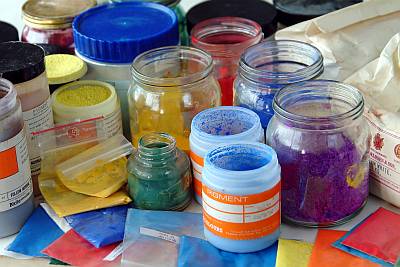 PIGMENTS, RREADY TO ADD TO WAX MEDIUM - USEFUL LINKS |
Pigment is ideally a fine dust made from grinding up natural or synthetic coloured materials which remain stable, enduring time unchanged. Rock is a good example of a natural raw material. Pigments are insoluble Encaustic paint needs to contain wax & colour. The qualities of the ingredients determine the final character & behavior of the paint. |
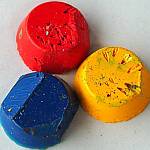 |
The simplest encaustic paint could be
a basic mixture of beeswax and some pigment. However, there are many
other types of waxes, each with their own unique heat curve and character.
There are also resins that can be mixed with waxes to alter final working
qualities of hardness, melting point and flexibility. . There
are many possibilities in formulation. |
|
Pigments (and dyes) offer a multitude of qualities apart from the colour they imbue. The particle size can change the flow character quite dramatically for some application methods. All pigments are insoluble but the various pigment materials have their own set of identified characteristics, most important of which is "permanence" or light-fastness (see blue wool scale) , but also transparency (light penetration), toxicity (poisonous qualities) and for encaustic use their "heat tolerance". So some pigments will alter colour under heat, others can produce toxic dangers in dust form or through fuming when heated. Contamination by ingestion is also a consideration for the heavy metal pigments that were once widely used (white lead for instance). This page is not even going to attempt to analyse pigments, but
they are the main colouring agent for encaustic paint, so it is good
to know a little about them. Follow the links further down this page. |
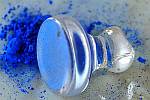 |
The muller shown here is traditionally used to rub or mill down the pigment into a very fine powder. This is done on a thick glass slab. The finer dust should not be inhaled, but will, when mixed with the medium (wax for encaustic) provide a denser and stronger colour. There are recommendations for some pigments regarding the characteristics at particular "particle sizes". Finer particles are more fluid to use and less grainy to view. |
|
LINKS TO SITES RELATING TO
PIGMENT Individual pigments: (use the 'Jump
to Pigment' menu) Wikipedia's growing & useful pigment page data! Some terms used to describe colours Wikipedia's colour wheel & links... Vision and color are at the heart of painting. Here
is the most comprehensive discussion for artists of color perception,
color psychology, "color theory" and color mixing available online, and
one of the most comprehensive available anywhere in any format ... Some example pigment sources: |
|
Dyes are another form of colouration. Whereas pigments are insoluble particles, dyes have an affinity for their substrate, which in layman's terms means that a dye will chemically affect the surface and solution with which it is used. They are not described as permanent, although many can last a long time - look at some ancient cloth for example. These candle dyes (shown on left) have proved very invasive and managed to travel through plastic bags to contaminate surrounding materials. They are strong vibrant colours and can be mixed with the encaustic waxes easily, just by adding some of the dye compound to an amount of molten wax. Dyes will generally stain the support material. So, if used on card then the first colour applied will taint the whole card's surface. This can lead to some very interesting effects, so if you are not fixed upon your artwork results enduring time in a fixed manner, then these can be exciting to use. As the dyes fade over time then new arrangements of colour reveal themselves. Not good for investors, but intriguing for artist's interested in change and a quality of movement. All about DYES on Wikipedia: |
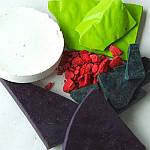 |
Candle maker's pigments are insoluble and not advised for use through-out an entire candle's wax as a colorant due to the fact that they may clog the wick and extinguish the candle! But they are yet another source of pigment colour for encaustic waxes. Their advantage is that they are designed to be used within a heated environment, so need to be colour fast relative to heat changes. Also they are already in a wax base of sorts, so there is no dust issue to cause health dangers. Check your supplier for further specifications. |
| The natural colour of wax varies due to the origination of its creation. Beeswax can be pale or dark yellowish orange. Carnauba can also vary from a yellowy brown to a more gray tone. The refined waxes are transparent grayish whites to very whitish hue. So if these cover a range with sufficient tone for your work then no colour need be added at all. Of course, they will alter colour through time, the refined ones will yellow somewhat and the darker ones will change dependant on their constitution - could fade or darken! But once again, if permanence of state is not your priority then there are interesting potentials with just the natural colours of wax too! | |
| So in summary: | |
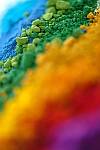 |
|
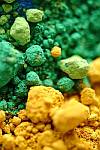 _ _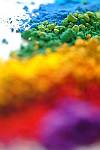 _ _ _ _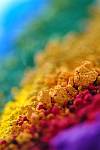 _ _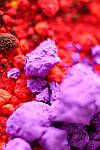 |
|
Where next? Recipes or Ready-Made wax Colours or Support Materials |
|
 ____ ____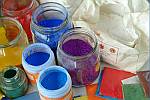 _____ _____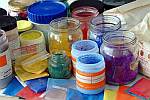 |
|
|